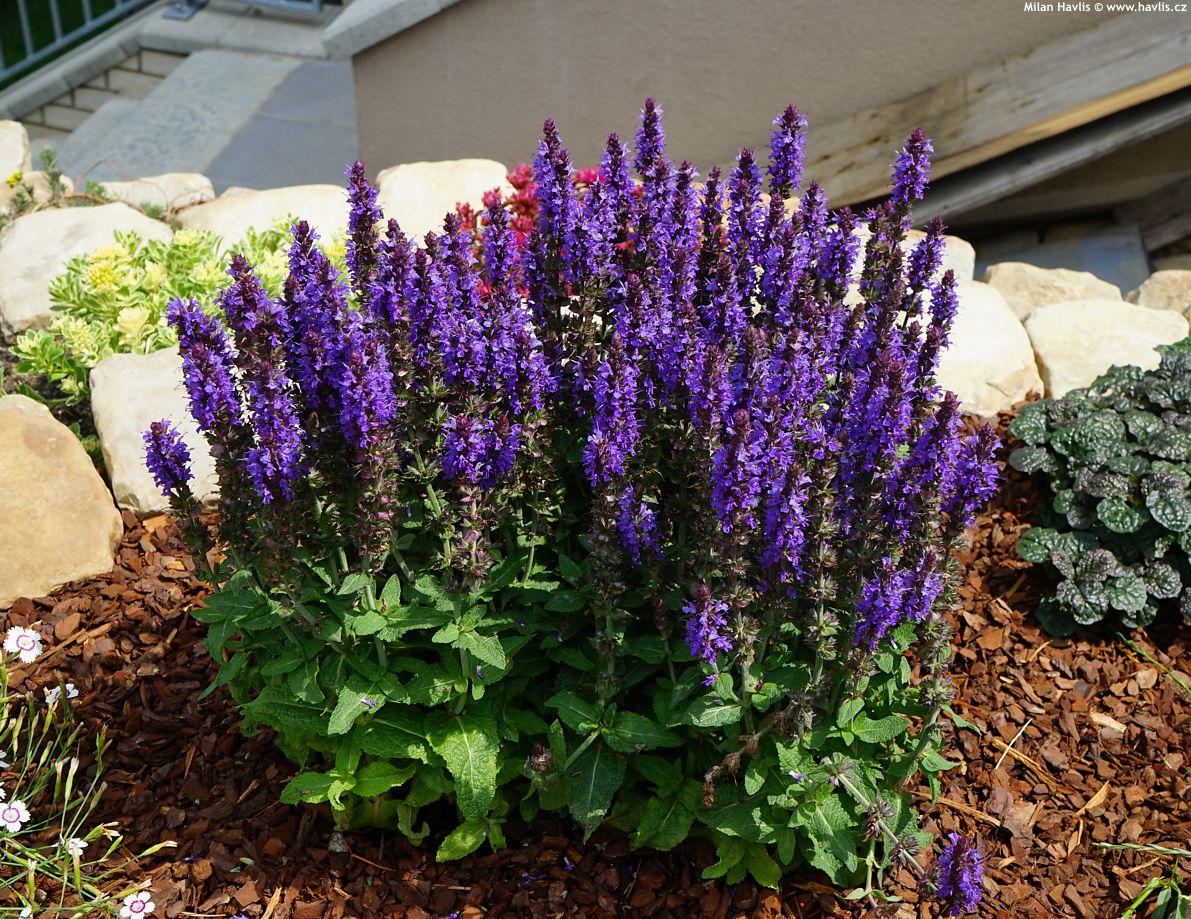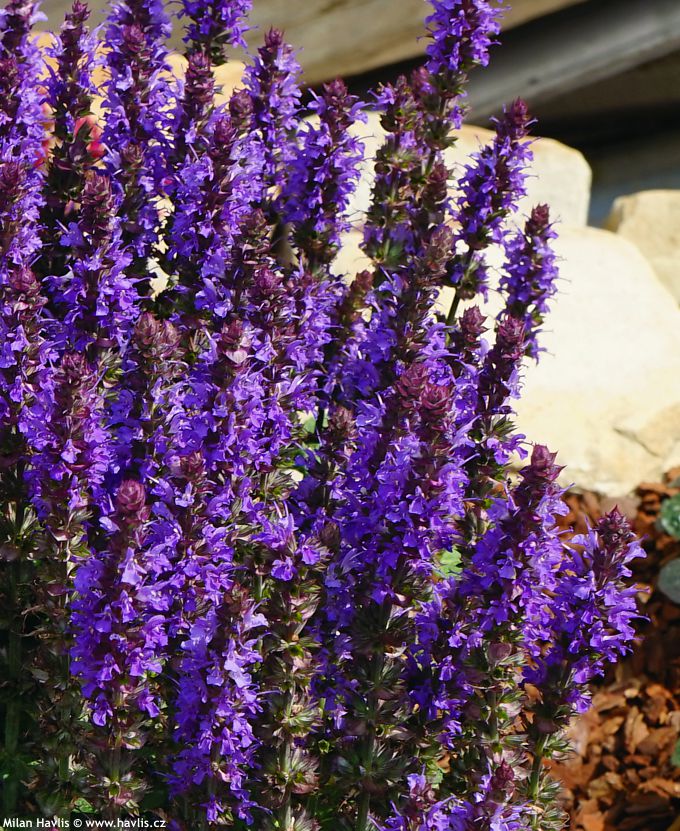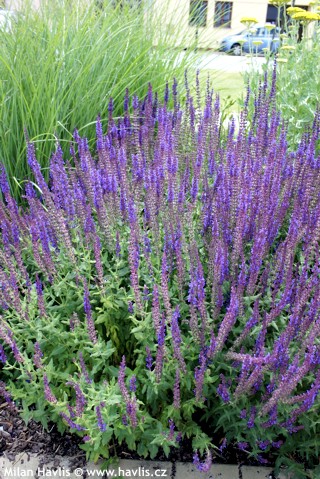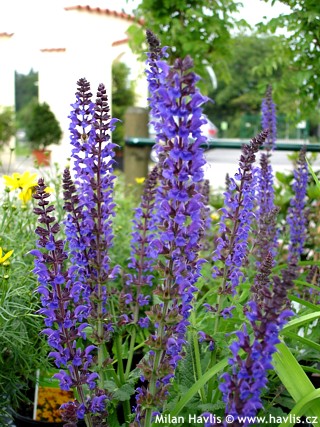Salvia nemorosa 'OSTFRIESLAND' wood sage
size/type
mid-sized perennial,mid-sized perennial
usual height
0,3-0,5m
usual width
0,4-0,5m
leaves
deciduous broadleaf
colour of leaves
flowers
showy
colour of flowers
blooming time
May-September
location
full to partial sun
USDA zone (lowest)
4 (down to -34°C)
winter protection
for zone 5+6

for zone 7

categorized
Salvia
Salvia is a large genus, containing about 900 species. In our climate mostly common (evergreen) sage is grown for culinary uses. Also, very popular are those of subtropical origin that are used here as annuals with long flowering season, especially in public areas. We concentrate on herbaceous perennials which are not widely cultivated and we believe that there are species, hybrids, and varieties worth the job.Description of the plant:
Ostfriesland (East Friesland) is a flat lowland in North Germany, renowned for fertile soil and mild, humid climate which is why there are a lot of nurseries. No wonder that this wood sage received the same name, remembering the region. Ostfriesland sage makes compact clumps with erect stems 35-45 cm tall, bearing long spikes of numerous deep violet-blue flowers from June until September. The calyxes are purple violet, just like the stems, which creates a great background even if the plant is not in full bloom. Leaves are mid green, narrowly ovate, wrinkled, and softly hairy. Cutting off stems with spent flowers will encourage new flowering.Sage will grow in almost any well-drained soil. For best results grow it in light, humus-rich, well-drained soil in full sun or light shade. It is perfectly hardy to about -34°C (USDA zone 4) and will grow in outdoor pots and throws, too.
Last update 27-04-2018
QUICK PRICE OVERVIEW
CURRENTLY SOLD OUT
WANT TO TRY A SIMILAR PLANT?



















